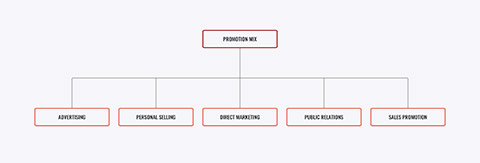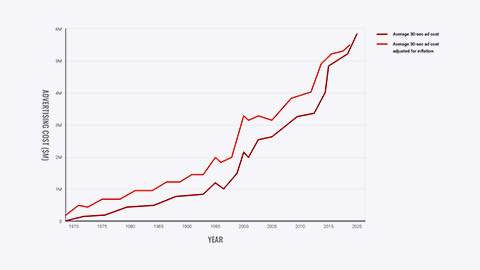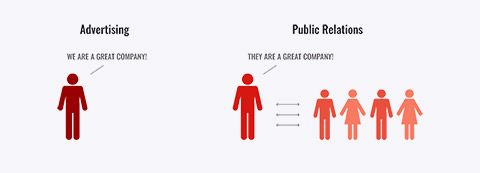Welcome to Promotion. In this topic, you will learn about:
- Promotion mix
- Advertising direct and digital advertising
- Public relations (PR)
- Personal selling
- Sales promotions

The promotion mix, also known as the marketing communications mix, is a subset of the marketing mix. It is is a specific blend of promotion tools that marketers may choose to use in assisting them in reaching the goals of the company. Below are the five variables of the promotion mix:
- Advertising: Any paid form of nonpersonal presentation and promotion of ideas, goods, or services by an identified sponsor.
- Direct and digital marketing: Engaging directly with carefully targeted individual consumers and customer communities to both obtain an immediate response and build lasting customer relationships.
- Public relations (PR): Building good relations with the company’s various publics by obtaining favourable publicity, building up a good corporate image, and handling or heading off unfavourable rumours, stories, and events.
- Sales promotion: Short-term incentives to encourage the purchase or sale of a product or service.
- Personal selling: Personal customer interactions by the firm’s sales force with the purpose to engage customers, making sales, and building customer relationships.
Integrated marketing communications
Integrated marketing communications (IMC) refers to carefully blending the mix of promotion tools and coordinating the company’s many communications channels to deliver a clear, consistent, and compelling message about the organisation and its’ brands.
Today’s customers are bombarded by brand content from all directions, for example, consider the various ways consumers would interact with companies such as Nike, Apple, or Coca Cola. With their use of integrated marketing communications, it means that companies such as these must carefully coordinate all of these customer touchpoints to ensure clear brand messages.
Content marketing managers are now choosing to reach smaller consumer segments in highly interactive and engaging ways, for instance, with a mix of traditional mass media and a wide array of online, mobile, and social media, they can create, inspire and share brand messages and conversations.
If you take Adidas for example, they have now chosen to abandoned TV altogether and simply use only digital channels to reach their targeted younger consumers. The Adidas CEO has acknowledged that their younger consumers engage with their brand predominantly over mobile devices.

Promotional strategies
The six 'M' model of marketing communications
When marketers commence in designing an integrated marketing campaign, they must be mindful that the average consumer is already exposed to thousands of communicated messages a day, making it tricky to stand out from the crowd. Many begin by following the six ‘M’ model of marketing communications:
Strategic intent
- Market: To who is communication addressing? It is important that communications are targeting the right audience and there is a good use of segmentation for effectiveness.
- Mission: What are the objectives of communication? Make sure that the messages communicated align to the company’s objective.
Strategic execution
- Message: What is the story to be communicated? Messages should be clear and concise and not overloaded with unnecessary information.
- Media: Where and how will the story be delivered? Multiple media types and places can be used, however, be aware that too many may risk sending mixed messages. Strategic impact Money: How much will be spent to communicate? Marketers will need to carefully utilise their budget to apply the right mix of media types. Measurement: How will the impact be assessed? There must be a plan in place to measure the results of a marketing campaign- It is data collected by the company to ensure their marketing tactics stay successful.
Addressing audiences in different ways

Push versus pull promotion strategy
The image below illustrates the two basic promotion mix strategies: push promotion versus pull promotion. The relative emphasis given to the specific promotion tools differs for push and pull strategies.

Push strategy
The push promotion drives for sales force and trade promotion to push the product through channels. The producer promotes the product to channel members that in turn promote it to final consumers. Business-to-business marketers tend to push more, putting more of their funds into personal selling, followed by sales promotion, advertising, and public relations.
Pull strategy
This promotion will generally be spending a lot on consumer advertising and promotion to induce final consumers to buy the product, creating a demand vacuum that pulls the product through the channel. Business-to-consumer companies pull more, putting more of their funds into advertising, followed by sales promotion, personal selling, and then public relations.
There are many advantages to advertising, one being that it can fast reach masses of geographically dispersed buyers at a low cost per exposure and enables the seller to repeat a message many times, often triggering quick sales. Because of advertising’s public nature, consumers tend to view advertised products as more legitimate, for instance, when a product is advertised through tv, radio billboards and so on, it can give the buyer the impression it is a trustworthy product. However advertising can have shortcomings, other than it being very expensive, advertising is also impersonal and lacks the direct persuasiveness of company salesperson, it is with that in mind where creative advertising strives to achieve connections with their buyers and build up a long-term image for a product.
Major advertising decisions
Don't forget- advertising is only part of a broader set of marketing and company decisions. It's job is to help communicate the brand's value proposition to target customers. Advertising must blend well with other promotion and marketing mix decisions.

The above image shows the four important decisions made by marketing management when developing an advertising program. These decisions include:
- setting advertising objectives
- establishing the advertising budget
- developing an advertising strategy, that is, message decisions and media decisions
- evaluating advertising campaigns.
Advertising is only part of a broader set of marketing and company decisions. Its’ job is to help communicate the brands’ value and proposition to target customers. Advertising must blend well with other promotion and marketing mix decisions.
Possible advertising objectives
An advertising objective is a specific communication task to be accomplished with a specific target audience during a specific period. Advertising objectives can be classified by their primary purpose which is, to inform, persuade, or remind. This table lists the examples of each of these specific objectives.
- Informative advertising is used heavily when introducing a new product category.
- Persuasive advertising becomes more important as competition increases.
- Reminder advertising is important for mature products; it helps to maintain customer relationships and keep consumers thinking about the product.
Methods of Setting the Advertising Budget
An advertising budget refers to the dollars and other resources allocated to a product or a company advertising program. Some companies can spend an exceptional amount of money a year on their ad campaigns but how can they determine if they have spent too little, too much or just right? There are four common methods used to set the total budget for advertising.
- The affordable method: this sets the promotion budget at the level management thinks the company can afford.
- The percentage-of-sales method: This establishes the promotion budget at a certain percentage of current or forecasted sales or as a percentage of the unit sales price.
- The competitive-parity method: aims for the promotion budget to match competitors’ outlays.
- The objective-and-task method: this involves developing the promotion budget by defining specific objectives, determining the tasks that must be performed to achieve these objectives, and estimating the costs of performing these tasks. The sum of these costs is the proposed promotion budget.
The many forms of direct and digital marketing, from direct mail, catalogues, and telephone marketing to online, mobile, and social media, all share some distinctive characteristics, this being that direct marketing is more targeted to audiences and usually focused to a specific target customer or customer community. The advantages of direct marketing are that this tool is immediate, personalised interactive and well suited to highly targeted marketing efforts, creating customer engagement, and building one-to-one customer relationships.
Selecting advertising media
The term advertising media refers to the different vehicles through which advertising messages are delivered to their intended audiences. Marketers must make decisions regarding what type of advertising media they wish to select. Click on the four steps below to view what is involved in advertising media selection:
To select media, the advertiser must determine the reach and frequency needed to achieve the advertising objectives. Reach is a measure of the percentage of people in the target market exposed to the ad campaign during a given period. Frequency is a measure of how many times the average person in the target market is exposed to the message. The advertiser also must determine the desired media impact of message exposure through a given medium. An advertiser wants to choose media that will engage consumers rather than simply reach them.
Media planners must consider each medium’s impact, message effectiveness, and cost. An important trend affecting media selection is the rapid growth in the number of media multitaskers, people who absorb more than one medium at a time.
Media planners must also choose specific media within each general media type. See examples in the below, where it lists the advantages and limitations of the major media types.
| Media type | Advantages | Limitations |
|---|---|---|
| Television | Good mass-marketing coverage; low cost per exposure; combines sight, sound, and motion; appealing to the senses | High absolute costs; high clutter; fleeting exposure; less audience selectivity |
| Digital, mobile, and social media | High selectivity; low cost; immediacy; engagement Capabilities | Potentially low impact; high audience control of content and exposure |
| Newspapers | Flexibility; timeliness; good local market coverage; broad acceptability; high believability | Short life; poor reproduction quality; small pass-along audience. |
| Direct mail | High audience selectivity; flexibility; no ad competition within the same medium; allows personalization | Relatively high cost per exposure; “junk mail” image. |
| Magazines | High geographic and demographic selectivity; credibility and prestige; high-quality reproduction; long life and good pass-along readership | Long ad purchase lead time; high cost; no guarantee of position |
| Radio | Good local acceptance; high geographic and demographic selectivity; low cost. | Audio only; fleeting exposure; low attention (“the half-heard” medium); fragmented audiences |
| Outdoor | Flexibility; high repeat exposure; low cost; good positional selectivity | Little audience selectivity; creative limitations |
In selecting specific media vehicles, media planners must balance media costs against several media effectiveness factors such as audience quality, audience engagement and editorial quality.
An advertiser must also decide how to schedule the advertising over time. The firm can vary its advertising to follow the seasonal pattern, oppose the seasonal pattern, or be the same all year.
Billboard advertising
Have a look at some incredibly creative and impactful direct media advertising used by companies to engage their target audiences.
- “Lightbulb” by Abbott Mead Vickers BBDO for The Economist
- “Bite” by Ogilvy & Mather Jakarta for Formula Toothcare
- “Nose Hair Trimmer” by Saatchi & Saatchi Indonesia for Panasonic
- “Crying Billboard” by WAX for the Calgary International Film Festival
Thirty-second ad cost during the Superbowl

Data for the year 2020 reflects that A thirty-second Super Bowl ad will cost companies USD 5.6 million, that's a whopping $186,666 per second! Despite 2019’s game drawing in the lowest viewership in recent years at approximately 98.2 million viewers, ad prices show no sign of dropping any time soon.
Have a look at the ten out of the fifteen most iconic Super Bowl commercials of all time, as stated by The Business Insider.
Amazon 2018
Tide 2018
P&G Always Pads 2015
Budweiser 2014
VW2011
Snickers Betty White 2010
Doritos 2007
McDonald's Michael Jordan 1993
Pepsi’s Cindy Crawford 1992
Apple's "1984" (1984)
Fun fact- This ad was aired only once and sold $150 million worth of Macs in 3 months
Evaluating advertising campaign
Measuring advertising effectiveness and the return on advertising investment has become a hot issue for most companies, especially in a challenging economic environment. The return on advertising investment is a marketing metric that measures the amount of revenue your business earns for each dollar it spends on advertising. One method marketers' employ to determine what the return on the advertising investment could be, would be to divide the costs of the advertising investment by the net return of the advertising investment. However, it is important to note, as there are several factors affect advertising effectiveness, some within and some without the control of the marketing team, measuring the results of advertising spending remains an inexact science.

Advertisers must be regular in evaluating two types of advertising results derived from their campaign, these are:
- The communication effects: measuring the communication effects of an ad or ad campaign tells the marketing team whether the ads and/or media are communicating the advertised message well. After an advert is run, the advertiser can measure how it affected consumer recall, product awareness, knowledge, and preference.
- The sales and profit effects: sales and profit effects of advertising are often harder to measure. One way to measure the sales and profit effects of advertising is to compare past sales and profits with past advertising expenditures. Another way is through experiments.
Organising advertising
Different companies organise in different ways to handle advertising. In small companies, advertising might be handled by someone in the sales department.
An advertising agency is a marketing services firm that assists companies in planning, preparing, implementing, and evaluating all or portions of their advertising programs. Agencies also bring an outside point of view to solving the company’s problems, along with lots of experience from working with different clients and situations. Most large advertising agencies have the staff and resources to handle all phases of an advertising campaign for their clients. Large brands and companies commonly employ several agencies that handle everything from mass-media advertising campaigns to shopper marketing and social media content. Smaller companies, on the other hand, commonly have their advertising handled by someone in the sales department.
Public relations (PR) involves news stories, features, sponsorships, and events that seem more real and believable to readers in comparison to ads. This promotion tool can also reach many prospects who prefer to avoid salespeople and advertisements. A well-thought-out public relations campaign used with other promotion mix elements can be very effective and economical. PR departments may perform any or all the following functions:
- press relations or press agency: creating and placing newsworthy information in the news media to attract attention to a person, product, or service
- product publicity: publicising specific products
- public affairs: building and maintaining national or local community relationships
- lobbying: building and maintaining relationships with legislators and government officials to influence legislation and regulation
- investor relations: maintaining relationships with shareholders and others in the financial community
- development: working with donors or members of nonprofit organisations, to gain financial or volunteer support.
Role and impact of PR

Public relations can have a strong impact on public awareness at a much lower cost than advertising. When using public relations, the company pays for staff to develop and circulate information and manage events. Public relations have the power to engage consumers and make them a part of the brand story and its telling. Despite its potential strengths, public relations have limited and scattered use. This situation is changing, however. Although public relations still capture only a small portion of the overall marketing budgets of most firms, PR can be a powerful brand-building tool. PR should work hand in hand with advertising, within an integrated marketing communications program, to help build customer engagement and relationships.
Major public relations tools
Click on each tool to find out how PR professionals like to use them to build awareness to a company and/or its’ product.
PR professionals find or create favourable news about the company and its products or people essentially making it “the news” to create interest and build relationships with consumers and other stakeholders.
Another PR tool is special events, like news conferences and speeches, brand tours, and grand openings, laser light shows, multimedia presentations, or educational programs designed to reach and interest target publics in a captivating manner.
PR also involves the preparation of written materials like annual reports, brochures, and company newsletters and magazines to reach and influence target markets.
Audiovisual materials, such as DVDs and online videos, are also being used increasingly as communication tools and engage a large audience as many audiences respond well to both audio and visuals.
Corporate identity materials can also help create a corporate identity that the public immediately recognises. Logos, stationery, brochures, signs, business forms, business cards, buildings, uniforms, and company cars and trucks all become marketing tools when they are attractive, distinctive, and memorable.
Companies can improve public goodwill by contributing money and time to public service activities.
Personal selling allows all kinds of customer relationships to spring up and involves personal presentations by the firm’s sales force to engage customers, making sales, and building customer relationships. This promotion tool involves personal interaction between two or more people, so each person can observe the other’s needs and characteristics and make quick adjustments to assist in making the sale. Personal selling is also the company’s most expensive promotion tool as the cost of the salesperson still occurs, regardless of whether they make a sale.
A salesperson will represent a company to customers by performing the following activities:
- Prospecting and communicating
- Selling and servicing
- Gathering information and building relationships
Most salespeople are well-educated and well-trained professionals who add value to customers and maintain long-term customer relationships. They listen to their customers, assess customer needs, and organise the company’s efforts to solve customer problems.
Sales force management
Major steps in sales force management
Sales force management is defined as analysing, planning, implementing, and controlling sales force activities. The major steps of the sales force management process include:
- designing sales force strategy and structure
- recruiting and selecting salespeople
- training salespeople
- compensating salespeople
- supervising salespeople
- evaluating salespeople
Designing the sales force strategy and structure
Each company should select a sales force structure that best serves the needs of its customers and fits its overall marketing strategy. There are three types of sales force structures that salespeople can be specialised in, these are:
- Territorial: a territorial sales force structure refers to a sales force organisation that assigns each salesperson to an exclusive geographic territory in which that salesperson sells the company’s full line. If a company sells only one product line to one industry with customers in many locations, it will likely use this sales force structure
- Product: in a product sales force structure, salespeople specialise in selling only a portion of the company’s products or lines
- Customer (or market): this sales force structure refers to a sales force organisation in which salespeople specialise in selling only to certain customers or industries.
If the company sells many products to many types of customers, it might need a product sales force structure, a customer sales force structure, or a combination of the two.
Other sales force strategies and structures
Inside sales force
Technical sales support and sales assistants are examples of inside salespeople. See the examples below:
- technical sales support people provide technical information and answers to customers’ questions
- sales assistants provide research and administrative backup for outside salespeople
- telemarketers and online sellers use the phone, internet, and social media to find new leads, learn about customers and their businesses, or sell and service accounts directly.
Outside sales force (field sales force)
Outside salespeople travel to call on customers in the field, in contrast, inside salespeople conduct business from their offices via telephone, online and social media interactions, or visits from buyers. A company may have an outside sales force (or field sales force), an inside sales force, or both.
Team selling
Most companies now use team selling to service large, complex accounts. Team selling does have some pitfalls, for example, salespeople who are used to having customers all to themselves may have trouble learning to work with and trust others on the team. Also, selling teams can confuse or overwhelm customers who are used to working with only one salesperson. There can be some difficulties in evaluating individual contributions to the team-selling effort, this can create some sticky compensation issues.
Compensating salespeople
The goal the company wishes to achieve by compensating salespeople is to build a skilled and motivated sales team that will help to create customer value, engage customers and build strong customer relationships. To attract good salespeople, a company must have an appealing compensation plan. Compensation consists of the following elements.
- Salary: a fixed amount, usually a salary, gives the salesperson some stable income
- Commissions and/or bonuses: this variable amount is based on sales performance, rewards the salesperson for greater effort and success. Compensation should direct salespeople toward activities that are consistent with the overall sales force and marketing objectives
- A mix of both: good salary and commission/bonuses
- Benefits: management can boost salespeople morale and culture through:
- Organisational climate
- Sales quotas
- Positive incentives
- Additional perks: salespeople’s compensation can also include reimbursement of expenses and fringe benefits.
How salespeople usually spend their time

The above image is displaying how salespeople spend their time, showing that on average, active selling time accounts for only 37-percent of total working time. Companies are always looking for ways to save time, some methods include:
- simplifying administrative duties
- developing better sales-call and routing plans
- supplying more and better customer information
- using phone, email, online, or mobile conferencing instead of travelling.
Companies need salespeople to spend much more face-to-face time with customers and prospects. For example, some companies have preferred its salespeople to spend four days a week in front of the customer and one day a week for all the administrative duties in the hope this increases sales.
Steps in the selling process

As shown here, these steps are transaction-oriented– aimed at closing a specific sale with the customer. But remember that in the long run, a single sale is only one element of a long-term relationship. So the selling process steps must be understood in the broader context of maintaining profitable customer relationships.
A single sale is only one element of a long-term customer relationship. The selling process must be understood in the broader context of maintaining profitable customer relationships. It is all about value exchange, with benefits for both sides & creating lasting relationships based on customer value. The following seven steps in the selling process are transaction-oriented, aimed at closing a specific sale with the customer. Click on each step to gain a better understanding of its purpose.
This first step identifies qualified potential customers. They want to call on consumers who are most likely to appreciate and respond to the company’s value proposition and that can serve the company well and profitably.
Pre-approach refers to salesperson learning as much as possible about a prospective customer before making a sales call to personalise their approach to that specific customer.
During the approach step, the salesperson should know how to meet and greet the buyer and get the relationship off to a good start.
During the presentation and demonstration step of the selling process, the salesperson tells the “value story” to the buyer, demonstrating how the company’s offer solves the customer’s problems. In this process the buyer can sometimes see, feel, touch, test the product so the customer can establish a connection and want for the product.
In handling objections, the salesperson should use a positive approach, seek out hidden objections, ask the buyer to clarify any objections, take objections as opportunities to provide more information and turn the objections into reasons for buying.
Closing refers to a salesperson asking the customer to finalise the purchase.
This last step, the follow-up is when a salesperson follows up after the sale to ensure customer satisfaction and repeat of business.

There is a wide assortment of tools that pertain to a sales promotion, some may include coupons, contests, discounts and premiums, all of which have many unique qualities and aim to attract consumer attention, offer strong incentives to purchase, and can be used to dramatise product offers and boost sagging sales. This promotion invites and rewards quick response, however, sales promotion effects are often short-lived.
Sales promotion tools are used by most organisations, and are targeted toward final buyers through consumer promotions, retailers and wholesalers through trade promotions, business customers through business promotions, and members of the sales force through sales force promotions.
Consumer promotion tools
Consumer promotions include a wide range of tools. These are as follows:
- samples are offers of a trial amount of a product. Sampling is the most effective, but most expensive way to introduce a new product or create new excitement for an existing one
- coupons are certificates that save buyers money when they purchase specified products
- rebates or cash refunds, are like coupons except that the price reduction occurs after the purchase rather than at the retail outlet. The customer sends a proof of purchase to the manufacturer, which then refunds part of the purchase price by mail
- price packs, also called cents-off deals, offer consumers savings off the regular price of a product. The producer marks the reduced prices directly on the label or package.
- premiums are goods offered either free or at low cost as an incentive to buy a product
- advertising specialties are useful articles imprinted with an advertiser’s name, logo, or message that are given as gifts to consumers
- point-of-purchase (POP) promotions are typically displays and demonstrations that take place at the point of sale
- contests, sweepstakes, and games give consumers the chance to win something
- event marketing (or event sponsorships)are used when creating a brand-marketing event or serving as a sole or participating sponsor of events created by others.
End of topic forum
There are forum activities for this topic. Select the ‘Topic 8 Forums’ option at the end of your module (which can be found at the bottom of your navigation menu) and follow the instructions for each forum.
Read the following article about how sex sells and the impact of this form of marketing.
Sexism sells and study finds more of it is affecting women's health
The objectification of women in advertising
Further reading:

